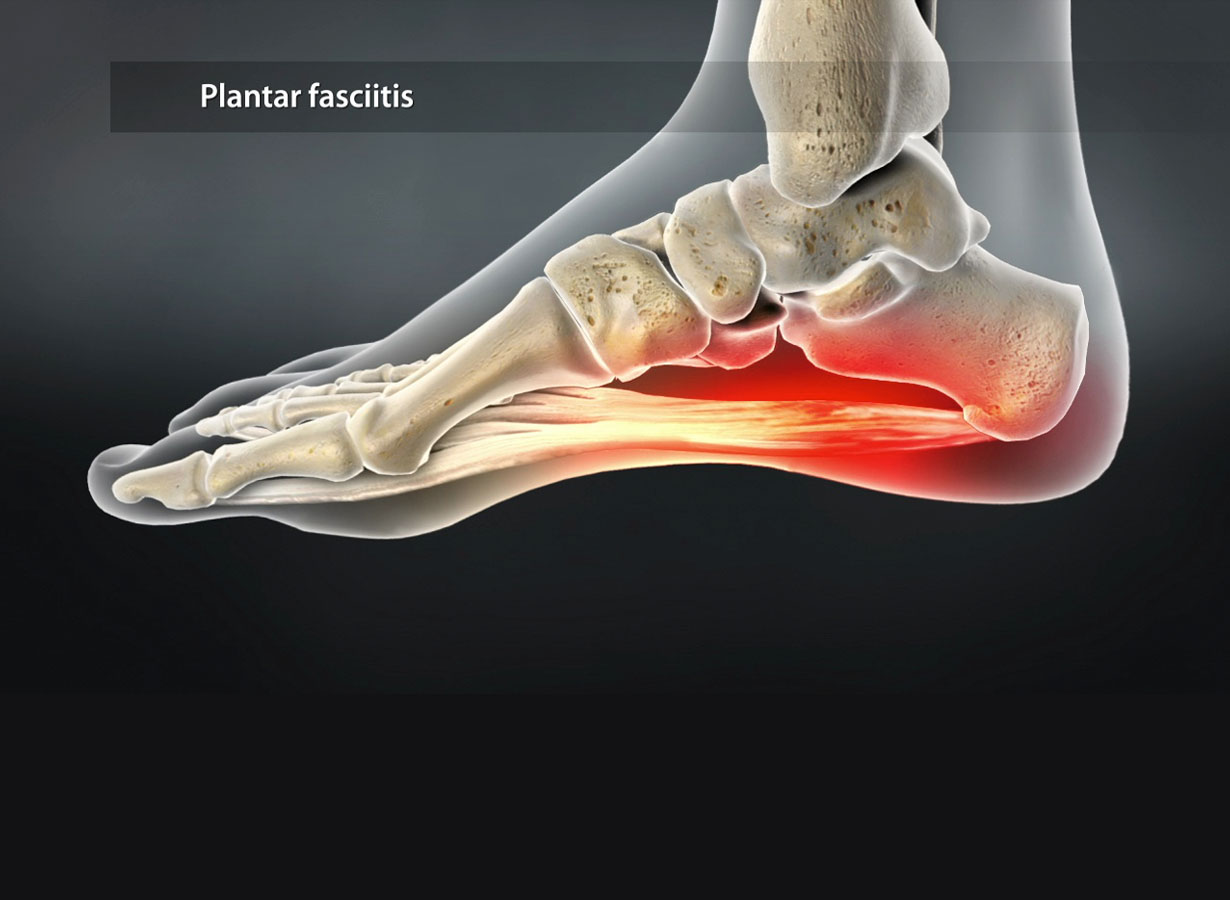Description
Plantar fasciitis also known as plantar fasciopathy or policeman’s heel is a condition commonly experienced by runners (1,4,5). Plantar fascia is a thick band of connective tissue that is located on the underside of your foot, extending from your heel to the front of your foot. The plantar fascia contributes to arch support, absorbs pressure when weight-bearing and plays an essential role in foot mechanics which assists with the absorption and release of energy (1). However, excessive loading and repetitive strain due to overuse of this tissue can lead to it becoming inflamed (1).
The cause
A major cause of plantar fasciitis is overuse and a spike in training load (1,4). There are however also contributing factors that predispose one to be affected by this condition. One of these factors are the degree of foot arch curvature. Athletes with flat feet are at greater risk of developing this condition as the plantar fasica now needs to be able to withstand greater forces due to a lack of arch curvature (1,4,5). Other risk factors include excessive running (volume and frequency), calf and intrinsic (small muscles within the feet) foot muscle tightness, footwear without sufficient arch support, being over-weight, leg length discrepancy, occupations requiring prolonged standing/walking and living a sedentary lifestyle (1,5).
Signs and Symptoms
Plantar fasciitis characteristically causes pain on the inner and underside of the foot close to the heel which may also extend to the middle of the foot (2). The first few steps after climbing out of bed are significantly painful and may become progressively worse throughout the day (1,4). Tenderness is also experienced on direct pressure to your heel (2).
The assessment
At Floyd Lebatie Physiotherapy we take pride in carrying out detailed and comprehensive assessments. The assessment consists of the analysis of posture and foot mechanics. Furthermore, a gait and running assessment on a treadmill is also imperative. Muscle length, joint range of motion and strength also needs to be assessed as these factors may be contributing to, or if impaired, be the result of plantar fasciitis. At Floyd Lebatie Physiotherapy we ensure that the measurements of these assessments are done objectively to ensure accuracy and precision in the management of our patients.
Management
We want you to feel better, move better and compete better! To get you there, treatment will, in addition to and in conjunction with those mentioned below, consist of symptomatic management with the modification of certain activities (1,4), ice application, anti-inflammatory use, correction of footwear and use of heel cups (5). Taping the arch of the foot will also provide support and pain relief (1,5). Stretching of the plantar fascia, muscles and tendons around the area of pain is important (1,3,5). It is also essential to enhance the strength of the calf muscles and foot intrinsic muscles (1,4,5). As an alternative, if required, steroid injections may also reduce pain (1).
References
1.Bandara, E., & Kularathne, W. (2019). Physical Therapy Interventions for Plantar Fasciitis: A Review Article. International Research Journal of Advanced Engineering and Science, 4(4), 176-187.
2.Neufeld, S., & Cerrato, R. (2008, June). Plantar Fasciitis: Evaluation and Treatment. Journal of the American Academy of Orthopaedic Surgeons, 16(6), 338-346.
3.Sweeting, D., Parish, B., Hooper , L., & Chester , R. (2011). The effectiveness of manual stretching in the treatment of plantar heel pain: a systematic review. Journal of Foot and Ankle Research, 4(13), 1-13.
4.Thing, J., Maruthappu, M., & Rogers, J. (2012). Diagnosis and managememnt of plantar fasciitis in primary care. British Journal of General Practice, 62, 443-444.
5.Young, C., Rutherford, D., & Niedfeldt, M. (2001). Treatment of Plantar Fasciitis. American Family Physician, 63(3), 467-474.
